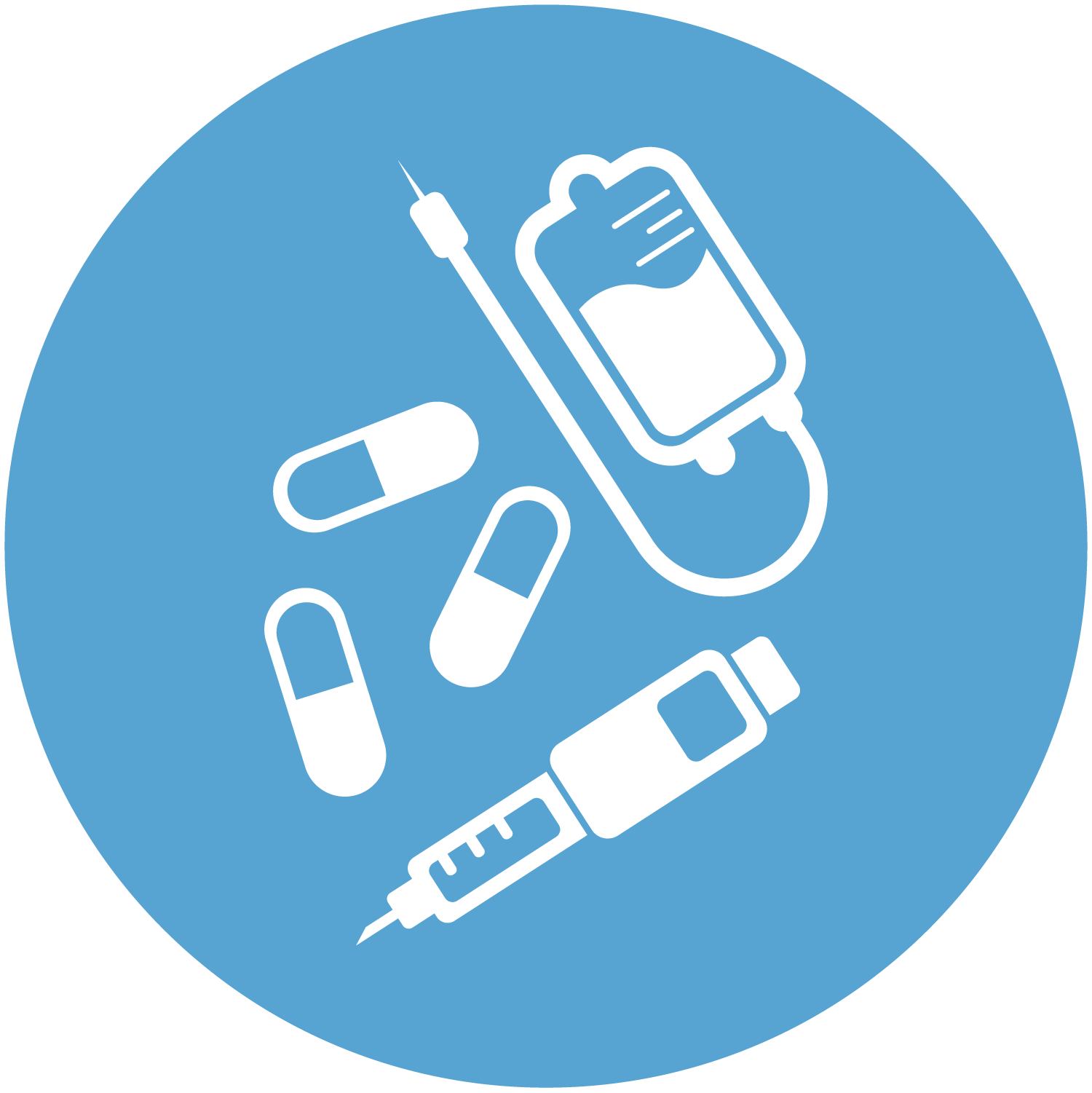Lesson 4 of JointHealthTM Education – RA looks closely at the treatment discussion you will have with your rheumatologist. In lesson 3, you learned that having treatment goals and an overall treatment plan is very important to doing well with RA. Knowing which treatments are available and may be best for you takes an open discussion with your rheumatologist on the benefits and risks of each one. Most rheumatologists treat up to 1,000 unique patients in their clinics each year, making them highly skilled and experienced at prescribing and monitoring whether your treatments are working as well as they should and keeping a close eye on your safe use of them.
At the end of this lesson, you should understand what evidence-based treatments are, know which types of treatments are available to control your RA, be aware of the importance of sticking with your treatment plan, and know how and what to monitor in between your appointments with your rheumatologist.
Please read each section of this lesson carefully, and then when you are ready, take the Lesson 4 Quiz to test your new knowledge. The quiz is an interactive and printable PDF.

Evidence-based RA treatments
- Research done by leading, independent scientists in rheumatology make up a body of “evidence” that guides patients and their rheumatologists in considering and choosing treatments. Evidence-based treatments are those ethically researched through clinical trials or health research studies involving large numbers of patients with RA. In the case of medications, if the research findings indicate they are safe and effective in clinical trials, they are then approved for use in large populations of patients. Similar types of studies are also conducted on non-medication types of treatment, such as physiotherapy or occupational therapy, and counselling.
- RA medication treatments come in two main categories: a category of medications that help control symptoms and a category that helps control the underlying disease process. You may need both in the early going of your disease in order to get maximum control over your RA and run the risk of joint damage.
- Medications to treat only symptoms include:
- non-steroidal anti-inflammatories or “NSAIDs” (example: over the counter ibuprofen or prescription Celebrex®)
- pain relievers, like acetaminophen (example: Tylenol®)
- glucocorticoids or steroids (example: methylprednisolone)
- opioids (example: codeine and morphine)
- Medications to treat the underlying disease and symptoms include the 3 following categories:
- csDMARDs: Conventional synthetic DMARDs include traditional medications such as methotrexate, sulfasalazine, hydroxychloroquine and leflunomide
- tsDMARDs: Targeted synthetic DMARDs include only those medications that were specifically developed to target a particular molecular structure such as baricitinib, tofacitinib citrate, and upadacitinib
- biological DMARDs:
- boDMARDS: Biological original DMARDs include abatacept, adalimumab-Humira, anakinra, certolizumab pegol, etanercept-Enbrel, golimumab, infliximab-Remicade, rituximab-Rituxan, sarilumab or tocilizumab
- bsDMARDs: Biosimilar DMARDs include adlimumab-Amgevita, adalimumab-Hadlima, adalimumab-Hulio, adalimumab-Hyrimoz, adalimumab-Idacio, etanercept-Brenzys, etanercept-Erelzi, infliximab-Avsola, infliximab-Infectra, infliximab-Remsima, infliximab-Renflexis, rituximab-Riabni, rituximab-Ruxience, rituximab-Riximyo, and rituximab-Truxima
- Non-medication treatments are important, too. They may include an exercise prescription, physiotherapy, occupational therapy, and counselling, among others. These therapy types are all well researched and patients with RA report that they are instrumental in helping them gain back their quality of life, physically and emotionally.

Making treatment choices with your rheumatologist
- Research shows that when patients with RA agree with their rheumatologist on their diagnosis and treatment prescription, they actually do better on the treatment. Finding agreement on and having confidence in your treatment plan increases your willingness to follow (also called “adherence”) the treatment plan, and as a result, get better.
- A very important research finding is that patients with RA define treatment success as no longer being in pain and seeing improvement in their quality of life. Rheumatologists think success is getting your disease into remission or at least low disease activity. They are one in the same, really. The treatment goals of disease remission or the lowest disease activity possible results in less or no pain and big improvements in quality of life.
- Rheumatologists generally follow treatment guidelines supported by ethical research over the past 50 years. The latest American College of Rheumatology RA Guidelines recommend the following approach for patients starting medication treatment:
- Step 1:
A person newly or recently diagnosed with moderate to severe rheumatoid arthritis is typically started on methotrexate, and possibly 1 or 2 other csDMARDs in combination with methotrexate, such as sulfasalazine and hydroxychloroquine (also called “combination” or “triple therapy”). While waiting for the medications to take effect (the full effect is usually seen in 12 weeks), symptom management medications such as a NSAID, or in some cases prednisone, may be used to help reduce inflammation quickly. - Step 2:
If a person does not respond, or does not respond well enough to the above combination therapy (i.e., their inflammation is not well controlled), biologic DMARD or tsDMARD (only 1 is used at a time) should be started. Some biologic DMARDs are more effective when used in combination with methotrexate. Some biologic DMARDs and tsDMARDs are just as effective on their own.
- Step 1:
- The first 3 months of medication therapy monitoring are important for both you and your rheumatologist. Starting your medication treatment as early as possible after diagnosis (the “window of opportunity”), increases the doses quickly if required, adding additional therapy, etc.
- The fear of side effects sometimes keeps patients with RA from taking their medication as prescribed, or at all. Concern over side effects is understandable, but the most important things to know about side effects are these:
- Untreated or undertreated RA poses a greater threat to you, your joints and your long term health and well-being than most medication side effects
- The most common side effects of RA medications are the least serious, and the most serious side effects occur very rarely
- Most RA medications can be managed by temporarily stopping it, or decreasing the dose and slowly increasing it again to the appropriate dose strength

Sticking with your RA treatments
- Until scientists find a way to permanently “shut off” the auto immune response that keeps RA active in your body, sticking with the medication and non-medication treatments that make up your treatment plan is very important to maintaining disease control and your quality of life.
- In a recent global survey, over a third of patients with RA report that they were not taking their medication exactly as prescribed. The most common reasons given for not taking their medication as prescribed were side effects and inconvenience, followed by the way the medication was taken or given and how frequently it needed to be taken.
- Understanding the side effect profile of your medication(s) is important but should not cause you to fear taking it.

Monitoring the effectiveness of your treatments and treatment plan
- You play an important role in monitoring the effectiveness of your treatments and progress against your treatment plan. You live with your disease every moment of every day, and the improvements or worsening of your symptoms can best be judged by you.
- As part of your treatment plan, keep a journal that records symptoms and important quality of life measures such as your sleep patterns, ability to do daily tasks, attend work regularly, participate in leisure activities and sport, and other things that you feel are important measures of how well (or not) you are doing. The benefits of keeping a RA journal are well documented by research.
- You will probably be asked to go to a lab for regularly blood tests, monthly to begin with and then every two or three months as directed by your rheumatologist. Many patients with RA ask for copies of their lab tests so that they can include the results in their journal. Normal or improving lab tests can motivate you to continue following your treatment plan because you see the positive results in black and white and are assured there are no negative effects of taking the medications.
Watch the coaching video

Arthritis Consumer Experts
© 2000-2022 ACE Planning and Consulting Inc.

ACE thanks Arthritis Research Canada (ARC) for its scientific review of ACE and JointHealthTM information and programs.

Arthritis Consumer Experts
© 2000-2022 ACE Planning and Consulting Inc.

ACE thanks Arthritis Research Canada (ARC) for its scientific review of ACE and JointHealthTM information and programs.



